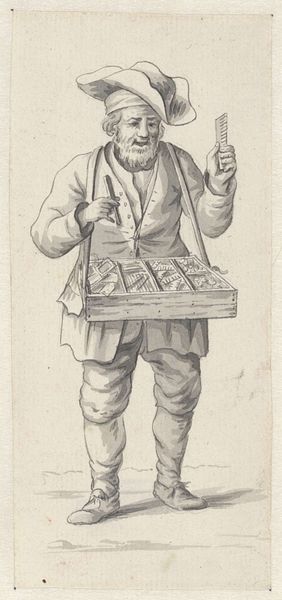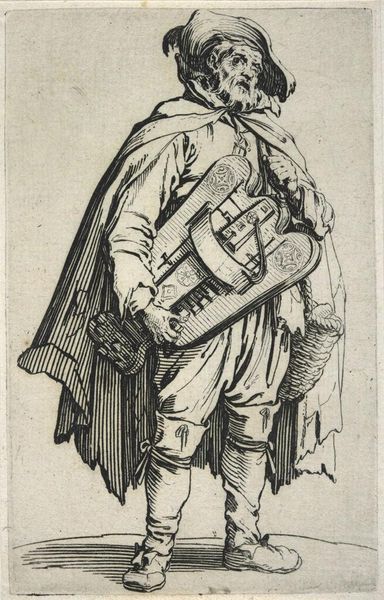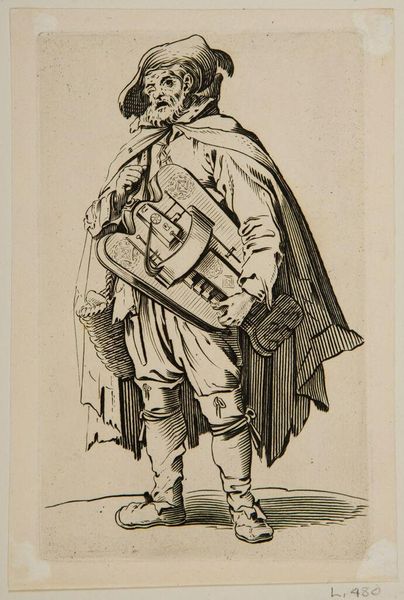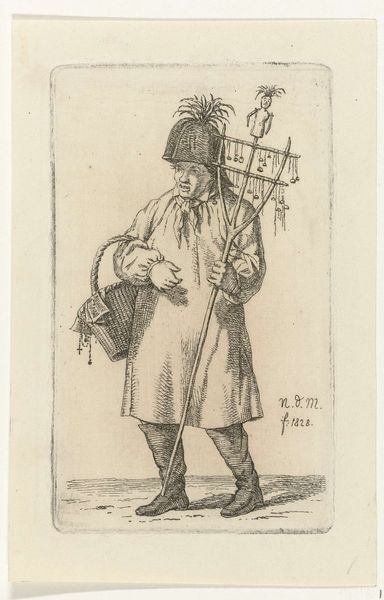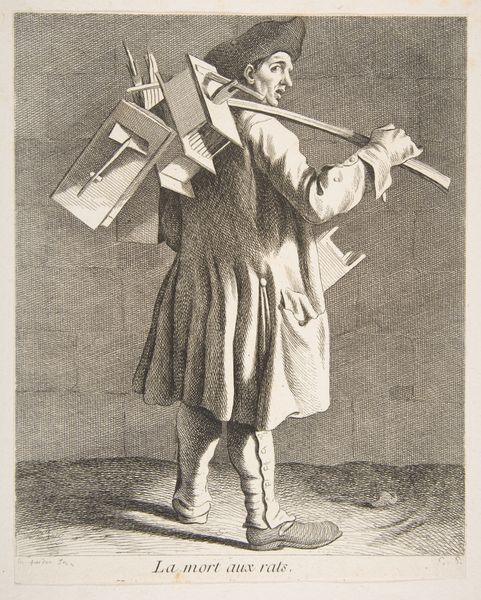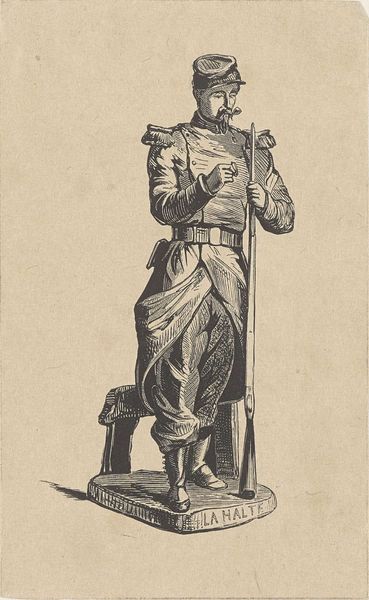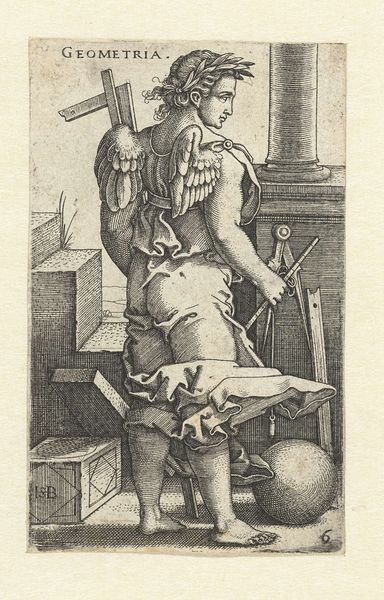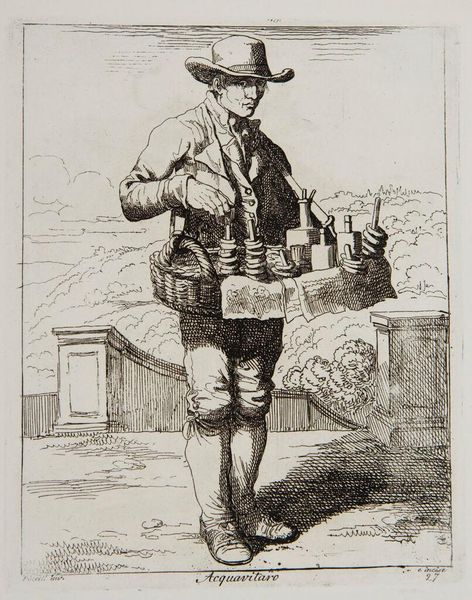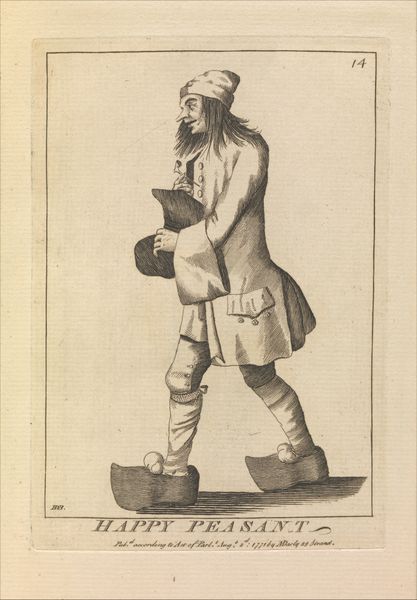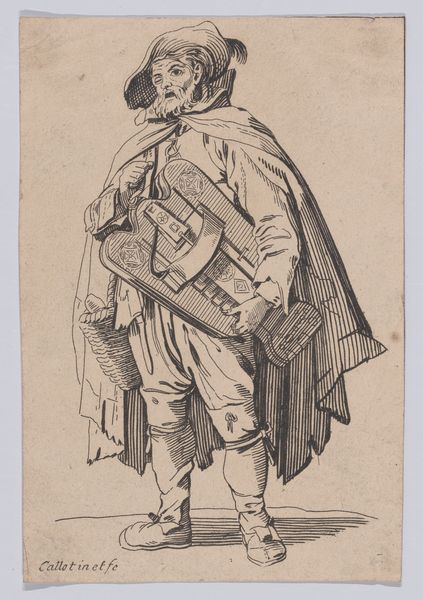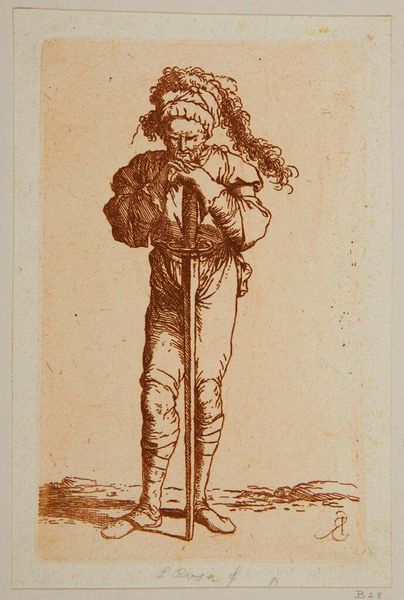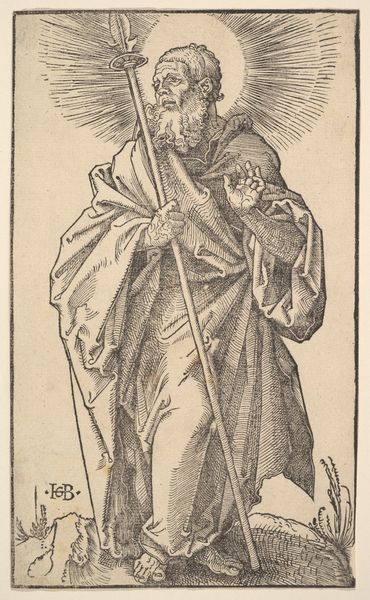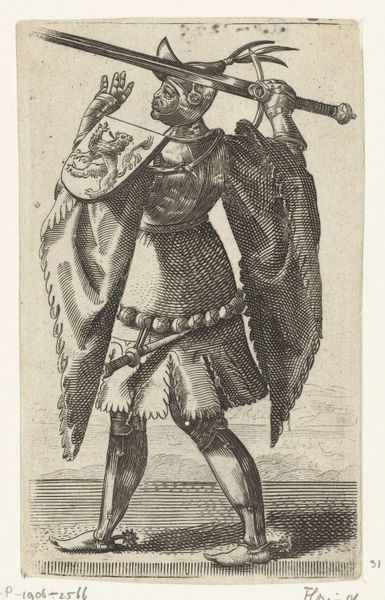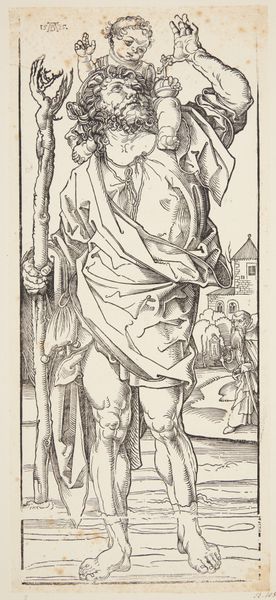
Dimensions: width 59 mm, height 136 mm
Copyright: Rijks Museum: Open Domain
Editor: So, this is *Marskramer*, a print by Pieter de Goeje, dating back to between 1789 and 1859. It's got this kind of, almost comical, quality – very much feels like a character sketch. What's your interpretation of this character? Curator: Notice how the print medium itself reinforces the theme of accessibility, mimicking the way these peddlers brought goods directly to the people. Beyond a simple caricature, observe how de Goeje uses clothing and wares to communicate this man’s social standing and occupation, connecting to established tropes of the “merchant” figure. Where else might we see allusions to similar archetypes in other media? Editor: So, he’s more than just a funny drawing; the symbolism reinforces a common societal role. The clothing does feel like it fits a “type”, yeah. Like, a stage character! Curator: Precisely! And consider the comb held aloft— a universal symbol of grooming and order, even vanity— juxtoposed with the tools held in his opposite hand, the instruments he uses, creating a dialogue about status, identity, and what people value from this merchant’s trade. It carries so many layers. What story does the arrangement of these tools convey to you about his time and place? Editor: Wow, I hadn’t even considered how the specific goods related to the man himself. Seeing those connections… changes everything! Curator: And it shows how symbols shift and settle with context, accumulating nuance and association over time. Always consider the context! Editor: I'll remember that - it makes analysing the meaning so much richer! Curator: Indeed. De Goeje provides a unique lens to examine cultural values and social hierarchies from over a century ago. There's more than meets the eye, isn't there?
Comments
No comments
Be the first to comment and join the conversation on the ultimate creative platform.
